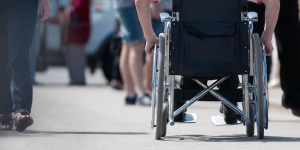Ageing is about change. When today’s baby boomer generation grew up, the average life expectancy in the US was just over 60 years old. Our senior population enjoys better health and is more knowledgeable about health than any previous generation. This has helped the generation set new records and establish new standards for longevity and senior lifestyle. Along with that longevity come emotional and physical realities that need the attention of our seniors and their offspring.
Ageing with purpose requires change. One of the more intimidating adaptions that today’s senior face is finding the correct living environment; one that will allow our seniors to thrive in a safe and manageable environment.
For this dilemma, advance planning is helpful. Usually, a child or friend needs to help seniors sort through the many independent, semi-dependent and assisted living options that exist today.
Guidelines For Making the Right Senior Living Choices
In order to ensue seniors are in the best, safest and most social environment, we must understand that one size does not fit all. The correct way to proceed is to analytically assess the senior’s lifestyle, health (a combination of physical and medical needs), financial capabilities as well as social and emotional needs.
Special considerations must be made when coupled seniors are at different stages of health. Most senior partners have very different health challenges. For example, one could show signs of dementia but be in excellent physical shape. The spouse could be fighting heart disease and be immobile but still quite alert. Obviously, both these spouses need different considerations and protections in the same residential environment. To this formula, the decision makers must add the prospects for the near-term and long-term future.
Lifestyle – One of the first considerations is how the senior will be transported to medical appointments, movies, sporting events or shopping centers. If the senior has lost or will lose the ability to drive, living accommodations with public or community transport is strongly recommended. Seniors thrive when they can experience life beyond the perimeter of a senior community. There are many lifestyle considerations including walking paths, fitness center access, Internet access, social meals and structure that come into play. Remember that seniors are more active and want to stay that way. This means seniors need to enjoy mental and physical stimulus.
Maintenance – Whichever senior living arrangements are selected, make sure there are provisions to keep the living quarters clean, healthy and safe. Whether the senior is living alone or with their spouse, maintenance inside and outside the residence can slip quickly. This can cause health and unnecessary risk of accident.
Social and Emotional Needs – Senior living accommodations can range from moderately expensive to very expensive. Involved parties must assess the senior’s financial capabilities in the present and going forward. If family members are willing to pitch in, this must be well planned with the realization that financial pictures often change unexpectedly. Understanding the senior’s financial capabilities is a task best evaluated by a responsible family member or professional in the field. Someone must become an expert on this topic which can include an analysis of the senior’s financial portfolio and an understanding of entitlements that can range from medical and prescription coverage to rent support or food provision.
One of the biggest challenges about planning the best living situation for seniors is engaging the seniors. This must be a joint decision. Be prepared because most seniors think they can manage independently for the rest of their lives. That includes driving. In reality, very few seniors can manage independently for long. Plan ahead and try to make the change a natural progression to a more accommodative, social and affordable lifestyle.
Image Credits: Ocskay Bence/BigStock.com







